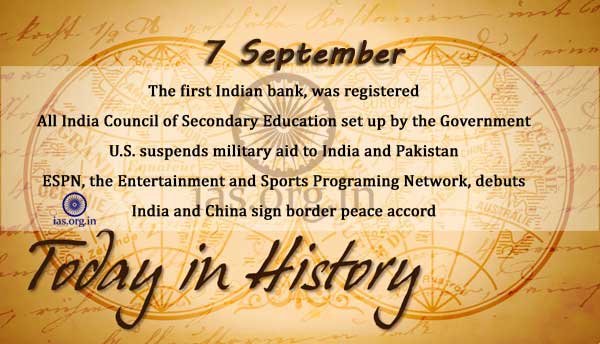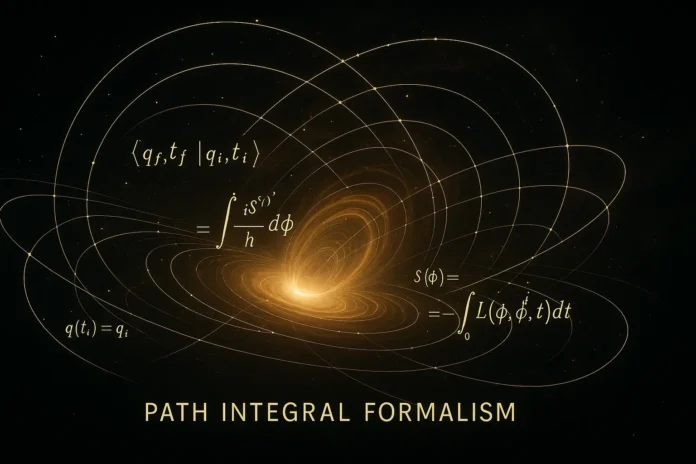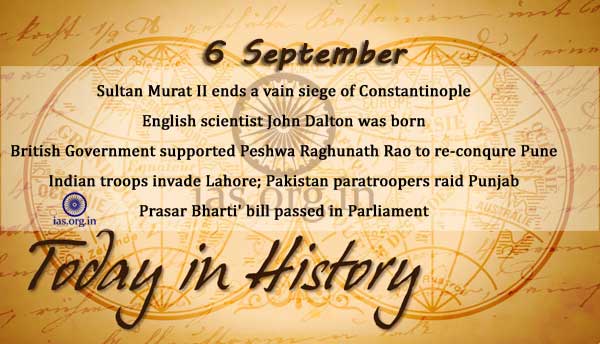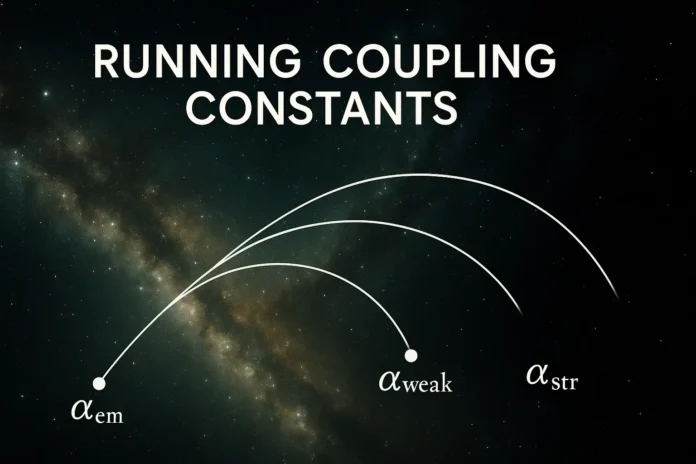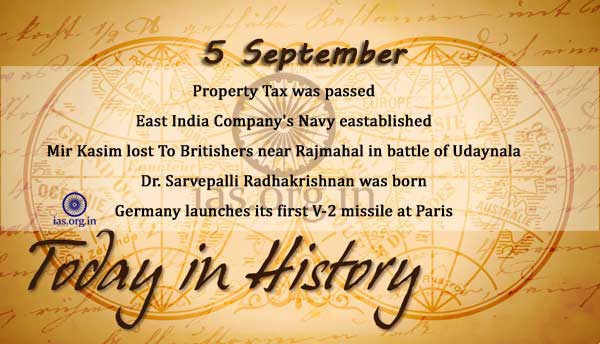Table of Contents
- Introduction
- Historical Background
- The Principle of Least Action
- Motivation for Path Integrals
- The Transition Amplitude in Quantum Mechanics
- Deriving the Path Integral
- Mathematical Form of the Path Integral
- Path Integrals in Field Theory
- Classical Limit and Stationary Phase Approximation
- Quantum Amplitudes as Sums Over Histories
- Propagator from Path Integrals
- Free Particle Path Integral
- Harmonic Oscillator in Path Integral
- Gauge Theories and Path Integrals
- Faddeev-Popov Method
- Path Integrals in Quantum Field Theory
- Generating Functionals
- Effective Action and Quantum Corrections
- Euclidean Path Integrals and Wick Rotation
- Non-Perturbative Effects and Instantons
- Lattice Gauge Theory and Numerical Approaches
- Functional Determinants
- Semiclassical Approximation
- Applications in Statistical Mechanics
- Conclusion
1. Introduction
The path integral formalism, developed by Richard Feynman, is a foundational approach to quantum mechanics and quantum field theory. It provides a profound and intuitive picture of quantum systems by summing over all possible trajectories (paths) a particle can take between two points.
2. Historical Background
Inspired by the principle of least action in classical mechanics, Feynman introduced path integrals in the 1940s. This formulation is equivalent to the Schrödinger and Heisenberg pictures but offers unique advantages in handling symmetries, fields, and gauge theories.
3. The Principle of Least Action
In classical mechanics, the motion of a system is determined by the action \( S \), defined as:
\[
S[q(t)] = \int_{t_i}^{t_f} L(q, \dot{q}, t)\, dt
\]
The classical path minimizes (or extremizes) this action.
4. Motivation for Path Integrals
Quantum mechanics violates the determinism of classical trajectories. Instead, the path integral approach considers all possible paths, weighted by a phase factor \( e^{iS/\hbar} \). The classical path corresponds to the dominant contribution in the semiclassical limit.
5. The Transition Amplitude in Quantum Mechanics
The transition amplitude from an initial state \( |x_i, t_i\rangle \) to a final state \( |x_f, t_f\rangle \) is:
\[
\langle x_f, t_f | x_i, t_i \rangle = \int \mathcal{D}[x(t)]\, e^{iS[x(t)]/\hbar}
\]
This is the central expression of the path integral formalism.
6. Deriving the Path Integral
The path integral can be derived by slicing time into infinitesimal intervals, inserting completeness relations, and using the time-evolution operator:
\[
U(t) = e^{-iHt/\hbar}
\]
This leads to an integral over intermediate positions, which becomes a functional integral in the continuum limit.
7. Mathematical Form of the Path Integral
The general expression is:
\[
\int \mathcal{D}[q(t)]\, e^{iS[q]/\hbar}
\]
This is a functional integral, where \( \mathcal{D}[q(t)] \) denotes integration over all paths \( q(t) \).
8. Path Integrals in Field Theory
In quantum field theory, the path integral becomes:
\[
Z = \int \mathcal{D}[\phi]\, e^{iS[\phi]/\hbar}
\]
where \( \phi \) is a field, and \( Z \) is the generating functional for Green’s functions and observables.
9. Classical Limit and Stationary Phase Approximation
In the limit \( \hbar \to 0 \), the integral is dominated by paths where \( \delta S = 0 \) (the classical path). This is the stationary phase approximation, connecting quantum and classical physics.
10. Quantum Amplitudes as Sums Over Histories
Quantum evolution is interpreted as a sum over all possible histories. Each path contributes with a phase \( e^{iS/\hbar} \), and interference between these paths leads to quantum behavior.
11. Propagator from Path Integrals
The Feynman propagator \( K(x_f, t_f; x_i, t_i) \) is obtained directly from the path integral and encodes the full quantum dynamics of the system.
12. Free Particle Path Integral
For a free particle:
\[
L = \frac{1}{2} m \dot{x}^2
\]
The exact result of the path integral is:
\[
K(x_f, t_f; x_i, t_i) = \left( \frac{m}{2\pi i\hbar (t_f – t_i)} \right)^{1/2} \exp\left( \frac{im(x_f – x_i)^2}{2\hbar (t_f – t_i)} \right)
\]
13. Harmonic Oscillator in Path Integral
The harmonic oscillator has an exactly solvable path integral. The result matches that from operator methods, illustrating the power of the formalism.
14. Gauge Theories and Path Integrals
Path integrals are natural in gauge theories. Gauge invariance requires care in defining the measure \( \mathcal{D}[A_\mu] \), and fixing the gauge introduces complications.
15. Faddeev-Popov Method
To quantize gauge theories, one inserts a delta function and a determinant (Faddeev-Popov ghost term) to remove gauge redundancy:
\[
Z = \int \mathcal{D}[A_\mu] \, \delta(G[A]) \, \det\left( \frac{\delta G}{\delta \alpha} \right) e^{iS[A]}
\]
16. Path Integrals in Quantum Field Theory
Correlation functions are derived as:
\[
\langle \phi(x_1) \phi(x_2) \cdots \rangle = \frac{1}{Z} \int \mathcal{D}[\phi]\, \phi(x_1)\phi(x_2)\cdots e^{iS[\phi]}
\]
These encode scattering amplitudes and observables.
17. Generating Functionals
Define the generating functional:
\[
Z[J] = \int \mathcal{D}[\phi]\, \exp\left[i\left(S[\phi] + \int d^4x\, J(x)\phi(x)\right)\right]
\]
Functional derivatives of \( Z[J] \) give correlation functions.
18. Effective Action and Quantum Corrections
The Legendre transform of \( \ln Z[J] \) gives the effective action, incorporating quantum corrections beyond the classical action. It is used in loop expansions and vacuum analysis.
19. Euclidean Path Integrals and Wick Rotation
To handle convergence and non-perturbative phenomena, one performs a Wick rotation \( t \to -i\tau \):
\[
Z_E = \int \mathcal{D}[\phi]\, e^{-S_E[\phi]}
\]
This transforms oscillatory integrals into exponentially damped ones and is essential in statistical mechanics and lattice simulations.
20. Non-Perturbative Effects and Instantons
Path integrals capture non-perturbative phenomena like tunneling and topological transitions (instantons). These are inaccessible in operator formalism but emerge naturally here.
21. Lattice Gauge Theory and Numerical Approaches
Discretizing spacetime allows numerical evaluation of path integrals. Lattice QCD uses this to compute hadron masses, phase transitions, and more.
22. Functional Determinants
In semiclassical expansions, one evaluates fluctuations around classical paths using functional determinants, which capture 1-loop quantum corrections.
23. Semiclassical Approximation
Expand around the classical path \( \phi_c \) as:
\[
\phi = \phi_c + \eta, \quad S[\phi] = S[\phi_c] + \frac{1}{2} \int \eta D \eta + \cdots
\]
Integrating over \( \eta \) yields corrections to the classical action.
24. Applications in Statistical Mechanics
Path integrals are closely related to partition functions in statistical physics. The Euclidean path integral formalism maps quantum field theories to statistical models.
25. Conclusion
The path integral formalism offers a powerful and intuitive framework for quantum theory. From summing over histories to computing non-perturbative effects and handling gauge theories, it underpins much of modern physics. Its mathematical richness and conceptual elegance make it an indispensable tool in theoretical and applied quantum research.
.
